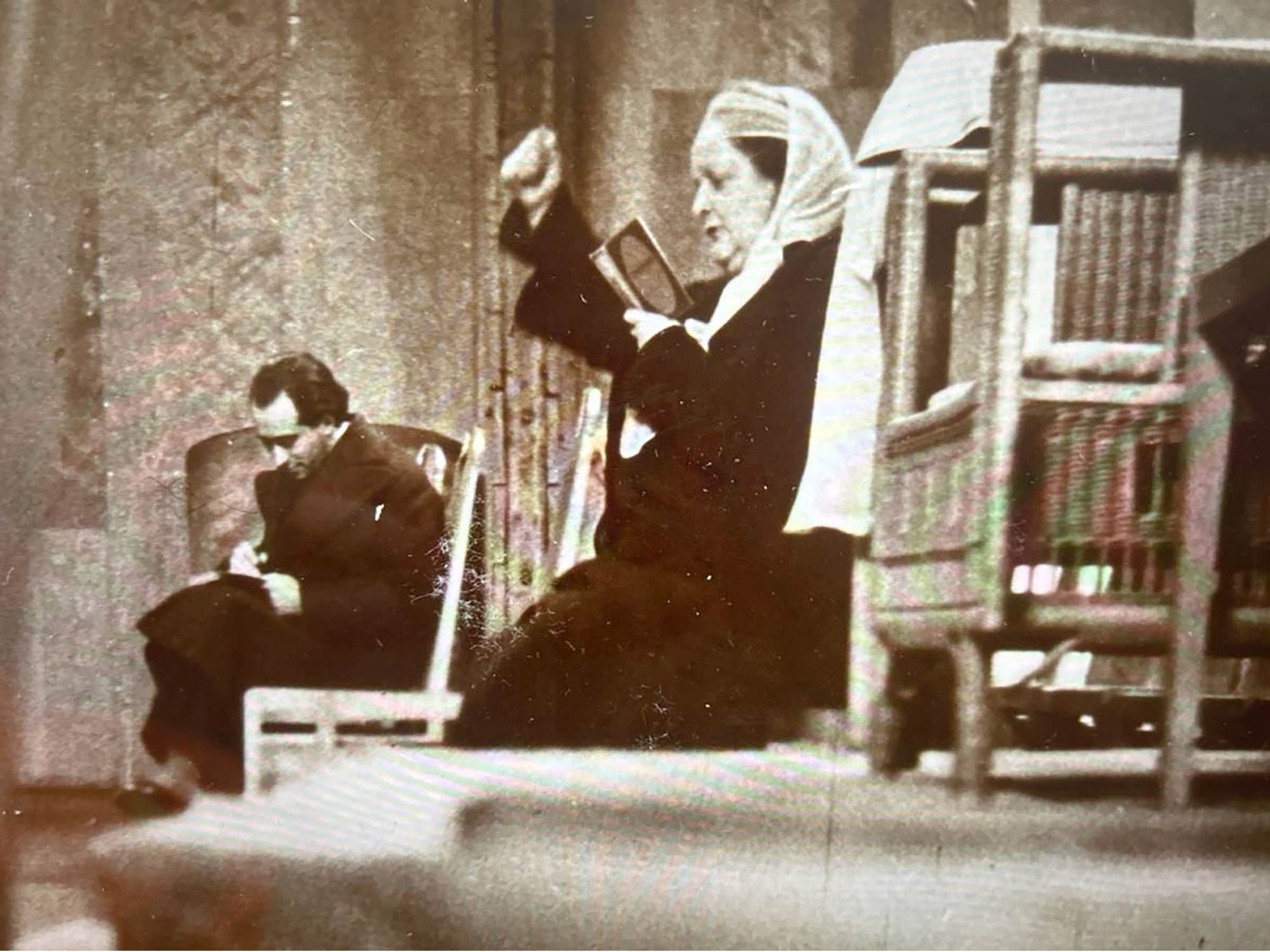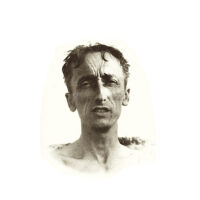Marie Steiner-von Sivers, a trained actor, worked tirelessly with Rudolf Steiner over the years leading up to the “Dramatic Course” of 1924. After the course and Rudolf Steiner’s death six months later, Marie Steiner continued her artistic quest with incomparable intensity and in a new form: as a pioneer of the art of directing.
Marie Steiner-von Sivers learned the art of the stage between 1894 and 1901 through three cultures, three cities, three women, three styles, and three stories. She first studied in Paris with Madame Favart (1833–1908), the so-called Queen of the Comédie Française. She then continued her training in St. Petersburg with the virtuoso Maria von Strauch-Spettini (1847–1904) from the Imperial German Theater. Finally, she studied in Berlin with the Austrian Serafine Détschy (1858–1927), the best specialist in speech technique. This enabled her to become familiar with very different theater cultures.
In 1900, she met Rudolf Steiner in Berlin at one of his lectures, which marked the beginning of a lifelong collaboration. Soon afterward, an artistic relationship developed based on the anthroposophical path of knowledge, cosmology, and its view of human beings and the world. This collaboration gave rise to experiments and practices such as the Art Rooms [Kunstzimmer], the staging of Eduard Schuré’s dramas, the Mystery Dramas, and the development of eurythmy in conjunction with speech, including speech formation as a speech art. These paved the way for the course of 1924.1 Marie Steiner-von Sivers made an intensive search for the theoretical and practical foundations needed for a spiritual renewal of theater.
The Transformative Force of the 1924 Course
The course on “Speech Formation and Dramatic Art” given by Rudolf Steiner and Marie Steiner-von Sivers in September 1924 marked a central turning point for Marie Steiner-von Sivers. She changed from an actor to a director. After Rudolf Steiner’s death, her endeavor to continue the collaborative work she had begun intensified. This led to some 23 years of uninterrupted artistic research, together with the newly founded ensemble, then called “Thespis’ Wagon” [Thespiskarren]2. From this point onwards, the knowledge was passed on exclusively to the members of the ensemble, which grew to around 48 members during these 23 years.3
The highlight of Marie Steiner-von Sivers’ theatrical career and that of the Goetheanum acting ensemble was the first complete production of Goethe’s Faust (Parts I & II) in the entire history of theater. Faust I was performed in an unabridged version in Strasbourg on May 7 and 9, 1937. On October 20, 22, and 24, 1937, scenes from Faust I, Faust II, and Hiram and Salome by Albert Steffen, as well as a eurythmy and choral program, were performed at the 19th World Exhibition in Paris during the Week of Art from the Goetheanum [Semaine Artistique du Goetheanum]. In this context, Marie Steiner-von Sivers was given the opportunity to take on responsibility as artistic director for an official Swiss contribution.4
A Pioneer in Many Regards
The role of female director, which she held for many years, made her a pioneer in directing. “The woman director as a specialist was a rarity until the 1930s”5, and women in male-dominated positions generally only appear in the history books with the cultural shift of the 1970s, although they have always been present and active in every historical period and all cultural and academic contexts. Directing was, and still is, largely thought of as a male activity.6
She was also a pioneer with regard to the aspect of directing as a profession, which first emerged at the turn of the 19th and 20th centuries7 and consisted of establishing directing as an art, upgrading it from an organizational to an aesthetic process. Up until this point, directing was seen as office and organizational work.
In addition, the “Speech Formation and Dramatic Arts” course was intended for the Section for the Performing Arts8, which was founded in the same year, as well as for professionals in the performing arts. As head of the Section for the Performing Arts at the School for Spiritual Science until 1948, Marie Steiner-von Sivers also played a pioneering role: A professorship, held by a woman, and in a leading position at that, was pure fiction at the time.9 Female professorships are still an issue in the academic world today.
Why Do We Need a Feminist Perspective?
Marie Steiner-von Sivers would probably not have defined herself as a feminist, although many aspects of her biography and her work can be understood from the present-day perspectives of feminism and the history of theater, in particular, her position as a woman in the theater and in the historical context of the turn of the 19th and 20th centuries in Europe.
A fundamental aspect that is suppressed in dominant narratives concerns the working process itself developed collaboratively between Rudolf Steiner and Marie Steiner-von Sivers, which always took place far removed from patriarchal power dynamics, as Rudolf Steiner’s correspondence and writings make clear. Furthermore, as another example, it can be deduced from the correspondence that Rudolf Steiner forwarded the letters addressed to him to Marie Steiner-von Sivers, naming her as the contact person for all questions concerning speech and acting and requesting that she be approached directly.10 In many cases, she herself replied directly to the correspondence addressed to Rudolf Steiner. Nevertheless, their collaborative activities have been received and criticized to this day on the assumption of patriarchal norms. For example, a letter from the archives at the Goetheanum, dated May 1949, from Mr. Alfred Meebold to Mr. Rösch states: “Frau Dr. was a great woman, but she was a woman. She did not really understand in the course of time that the Dr. only married her because of the passport difficulty.”11 Although Rudolf Steiner emphasized from the beginning that the Dramatic Course would be developed by him and Marie Steiner-von Sivers12, this is still not sufficiently represented, and Marie Steiner-von Sivers often remains only the secondary authority. In the face of patriarchal narratives, the need for new narratives shows how archiving, collecting, and repeating new narratives can become a central act of a feminist historiography13.
Today, it seems necessary to shed light on the historical role, work, and intentions of Marie Steiner-von Sivers. The aim is to read sources from a feminist perspective and to develop a new narrative from this angle. It is also to formulate a counter-narrative about Marie Steiner-von Sivers. A feminist-informed perspective on the history of theater can be understood as a task to give Marie Steiner-von Sivers’ work and the human beings who shaped her life a place in the canon of the history of theater. Neither has been granted to them to date.
Translation Joshua Kelberman
Image Marie Steiner-von Sivers (1867–1948)
Footnotes
- Hella Wiesberger, Aus dem Leben von Marie Steiner-von Sivers. Biographische Beiträge und eine Bibliographie [From the Life of Marie Steiner-von Sivers. Biographical Contributions and a Bibliography] (Dornach: Verlag der Rudolf-Steiner-Nachlassverwaltung [Publishing House of the Rudolf Steiner Estate], 1956), pp. 19–23.
- After the end of the “Dramatic Course” in September 1924, actors who were currently without commitments were invited by Rudolf Steiner and Marie Steiner-von Sivers to continue their studies in Dornach. They came together under the name “Thespis’ Wagon” [Thespiskarren].
- Cf. Beatrice Albrecht, Wegbereiter: Anfänge und Verbreitung des Sprachimpulses von Marie Steiner [Pioneers: The Beginnings and Expansion of Marie Steiner’s Speech Impulse] (Zurich: Vereinigung zur Förderung von Sprachkunst und Gestik [Association for the Promotion of Speech Arts and Gesture], 2009).
- Cf. Martina Maria Sam, Rudolf Steiners Faust-Rezeption. Interpretationen und Inszenierungen als Vorbereitung der Weltaufführung des gesamten Goetheschen Faust 1938 [Rudolf Steiner’s Reception of Faust. Interpretations and Productions in Preparation for the World Performance of the whole of Goethe’s Faust 1938] (Basel: Schwabe-Verlag, 2011), p. 218.
- Cheryl Black, The Women of Provincetown, 1915–1922 (Tuscaloosa, AL: University of Alabama Press, 2002), p. 95.
- Cf. Nora Steiner, Regie als Kunst des weissen Mannes? Wie der moderne Regisseur als weisses und männliches ‹Genie› konstituiert ist [Directing as the Art of the White Man? How the modern Director is constituted as a white and male “genius”] (Bern, Switzerland: Institut für Theaterwissenschaft Universität Bern, Bern Open Publishing, 2023), p. 6.
- Cf. Jens Roselt, Regietheorie. Regie im Theater. Geschichte – Theorie – Praxis [Theory of Directing. Directing in the Theater. History—Theory—Practice] (Berlin: Alexander-Verlag Berlin, 2015).
- Cf. Christiane Haid, Constanza Kaliks, Seija Zimmermann, eds., Goetheanum: Freie Hochschule für Geisteswissenschaft. Geschichte und Forschung der Sektionen [Goetheanum: Independent School for Spiritual Science. History and Research of the Sections]. (Dornach: Verlag am Goetheanum, 2017), pp. 187–207.
- In addition to the pioneering role played by Marie Steiner-von Sivers, other important pioneers were Ita Wegman (1876–1943), doctor and head of the Medical Section; Elisabeth Vreede (1879–1943), mathematician, astronomer and head of the Section for Mathematics and Astronomy; Maria Röschl (1890–1969), Germanist, philologist and head of the Section for the Spiritual Aspirations of Youth; and the sculptor Edith Maryon (1872–1924), who died young and was head of the Visual Art Section. They were all pioneers in their studies and chosen professions.
- Letters from Gottfried Haass-Berkow to Marie Steiner-von Sivers, July 1, 1923: “Herr Dr. [Steiner], has referred me to you, honored Frau Doctor, in response to my request for a course,” Rudolf Steiner Archive, Dornach.
- Document from the collections of the Goetheanum Archives.
- Rudolf Steiner, Speech and Drama, CW 282 (Spring Valley, New York: Anthroposophic Press, 1986, repr.). German title Sprachgestaltung und Dramatische Kunst [Speech Formation and Dramatic Art], lectures in Dornach on Apr. 10, 1921, and Sep. 5–23, 1924; see lecture on Sep. 5, 1924, p. 23–25.
- Cf. Blossom Stefaniw, “Feminist Historiography and Uses of the Past,” Studies in Late Antiquity 4, no. 3 (September 1, 2020): 260–283.






Thank you!
I should love to learn more about Marie Steiner-von Sivers. She seems to have been a remarkable human being.